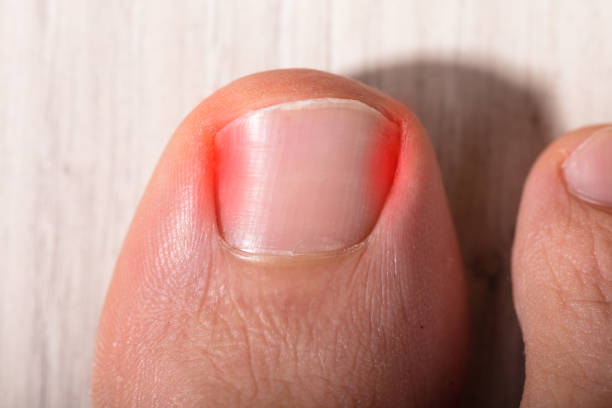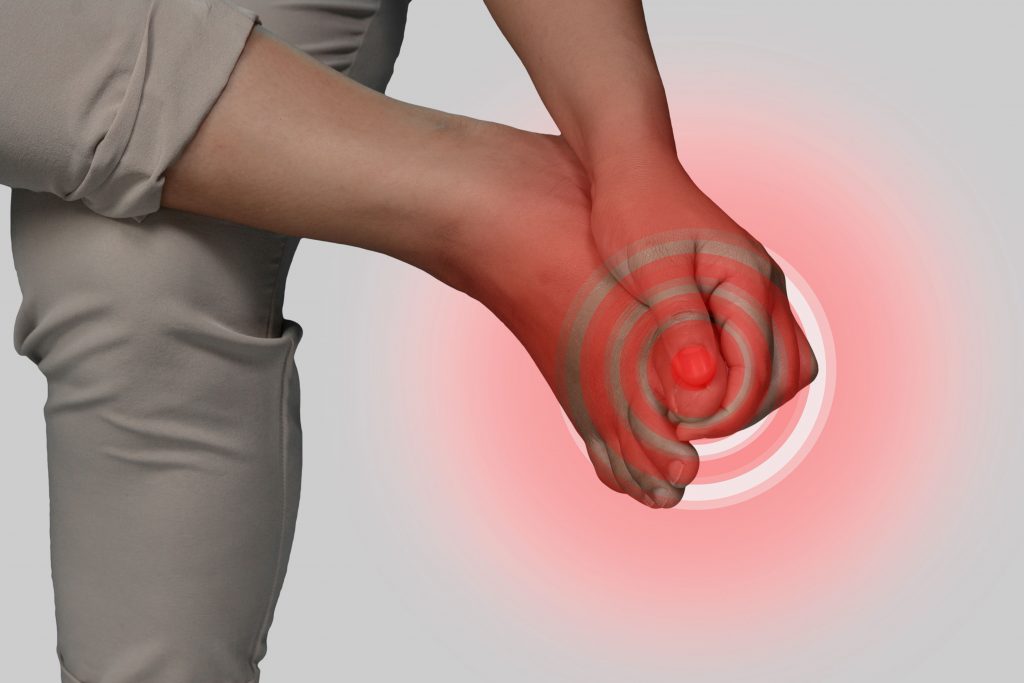WHAT ARE INGROWN TOENAILS?
Ingrown toenails are a natural condition in which the corner or side of a toenail grows into the soft flesh. The consequence is pain, redness, inflammation and, sometimes, an infection. Ingrown toenails generally affect your big toe. Generally you could take care of ingrown toenails on your own.
If the pain is serious or spreading, your primary care physician could take steps to ease your pain and help you circumvent problems of ingrown toenails. If you have diabetes or another disease which causes poor blood circulation to your legs, you are at higher risk of problems of ingrown toenails.
INGROWN TOENAILS SYMPTOMS
- Ingrown toenail symptoms include:
- Pain and soreness in your toe along one or both sides of the nail.
- Inflammation around your toenail.
- Swelling of your toe around the nail.
- Septicity of the tissue around your toenail.

WHEN SHOULD YOU SEE A DOCTOR?
See your doctor if you:
- Experience serious pain in your toe or pus or inflammation which seems to be spreading.
- Have diabetes or another disease which causes poor blood circulation to your feet and you experience any foot sore or infection.
INGROWN TOENAILS CAUSES
- Typical ingrown toenail causes include:
- Wearing shoes which crowd your toenails
- Cut toenails too short or not all the way
- Injuring your toenail
- Having oddly curved toenails
COMPLICATIONS OF INGROWN TOENAILS
Left untreated or undiscovered, an ingrown toenail could infect the underlying bone and lead to a severe bone infection. Problems could be particularly serious if you have diabetes, which could cause poor blood circulation and damage nerves in your feet.
So a small leg injury such as a cut, scrape, corn, callus or ingrown toenail might not cure properly and become infected. A difficult-to-heal open sore (foot ulcer) might need surgery to stop the decay and death of tissue or gangrene. Gangrene results from an interruption in blood circulation to a region of your body.

INGROWN TOENAILS PREVENTION
To help stop an ingrown toenail:
- Cut your toenails straight across – Do not curve your nails to match the shape of the front of your toe. If you have your toenails done at a salon, be sure to tell your pedicurist to cut your nails straight across. If you have a condition which causes poor blood circulation to your feet and you cannot cut your nails, see a podiatrist regularly to have your nails cut.
- Keep toenails at a moderate length – Trim toenails so they are even with the tips of your toes. If you cut your toenails too short, the pressure from your shoes on your toes might point a nail to grow into the tissue.
- Wear shoes which fit perfectly – Shoes which put too much pressure on your toes or pinch them might cause a nail to grow into surrounding tissue. If you have nerve damage to your feet, you might not be able to sense if your shoes fit too tightly. Take care to buy and wear properly fitted shoes, preferably from a shoe store specializing in fitting shoes for people with foot issues.
- Wear protective footwear – If your work puts you at risk of injuring your toes, wear protective footwear, for example steel-toed shoes.
- Check out your feet – If you are suffering from diabetes, check out your feet regularly for signs of ingrown toenails or other foot issues.
DIAGNOSIS OF INGROWN TOENAIL
Your doctor or primary care physician might diagnose an ingrown toenail based on your ailment or symptoms and a physical assessment of your nail and the surrounding skin.
INGROWN TOENAILS TREATMENT
If home remedies have not helped your ingrown toenail, your primary care physician might suggest:
- Lifting the nail – For a slightly ingrown nail (inflammation and pain but no pus), your primary care physician might carefully lift the ingrowing nail edge and place cotton, dental floss or a splint under it. This splits or separates the nail from the overlying skin and helps the nail grow above the skin edge. At home, you will be required to soak the toe and replace the material daily.
- Partially removing the nail – For a more serious ingrown toenail (inflammation, pain and pus), your primary care physician might cut or remove the ingrown portion of the nail. Before this procedure, your primary care physician might momentarily numb your toe by injecting it with an anesthetic.
- Removing the nail and tissue – If you have the problem frequently on the same toe, your primary care physician might recommend removing a portion of the nail along with the underlying tissue or nail bed. This procedure might stop that part of your nail from growing back. Your primary care physician will use a chemical, a laser or other methods.
Your doctor or primary care physician might also suggest using topical or oral antibiotics, particularly if the toe is infected or at risk of becoming infected.
If you or anyone you know is suffering from ingrown toenails, our expert providers at Specialty Care Clinics will take care of your health and help you recover.
Call 469-805-4561 to book an telehealth appointment for an at home check-up.
